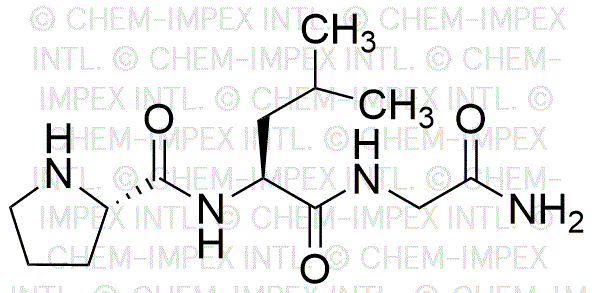Melanocyte-Stimulating Hormone-Release Inhibiting Factor is widely utilized in research focused on:
- Dermatology Research: This compound plays a crucial role in studies related to skin pigmentation and disorders. Researchers use it to explore treatments for conditions like vitiligo and hyperpigmentation.
- Endocrinology: It is significant in the study of hormonal regulation, particularly in understanding how it affects the release of melanocyte-stimulating hormone, which can lead to insights into various endocrine disorders.
- Pharmaceutical Development: The compound is explored for its potential in developing new drugs that target skin conditions or hormonal imbalances, providing a pathway for innovative treatments.
- Cosmetic Industry: It is being investigated for applications in skincare products aimed at regulating skin tone and pigmentation, offering consumers enhanced options for skin health.
- Neuroscience: Research into its effects on the central nervous system may lead to breakthroughs in understanding mood and behavior, potentially influencing treatments for mood disorders.
General Information
Properties
Safety and Regulations
Applications
Melanocyte-Stimulating Hormone-Release Inhibiting Factor is widely utilized in research focused on:
- Dermatology Research: This compound plays a crucial role in studies related to skin pigmentation and disorders. Researchers use it to explore treatments for conditions like vitiligo and hyperpigmentation.
- Endocrinology: It is significant in the study of hormonal regulation, particularly in understanding how it affects the release of melanocyte-stimulating hormone, which can lead to insights into various endocrine disorders.
- Pharmaceutical Development: The compound is explored for its potential in developing new drugs that target skin conditions or hormonal imbalances, providing a pathway for innovative treatments.
- Cosmetic Industry: It is being investigated for applications in skincare products aimed at regulating skin tone and pigmentation, offering consumers enhanced options for skin health.
- Neuroscience: Research into its effects on the central nervous system may lead to breakthroughs in understanding mood and behavior, potentially influencing treatments for mood disorders.
Documents
Safety Data Sheets (SDS)
The SDS provides comprehensive safety information on handling, storage, and disposal of the product.
Product Specification (PS)
The PS provides a comprehensive breakdown of the product’s properties, including chemical composition, physical state, purity, and storage requirements. It also details acceptable quality ranges and the product's intended applications.
Certificates of Analysis (COA)
Search for Certificates of Analysis (COA) by entering the products Lot Number. Lot and Batch Numbers can be found on a product’s label following the words ‘Lot’ or ‘Batch’.
*Catalog Number
*Lot Number
Certificates Of Origin (COO)
This COO confirms the country where the product was manufactured, and also details the materials and components used in it and whether it is derived from natural, synthetic, or other specific sources. This certificate may be required for customs, trade, and regulatory compliance.
*Catalog Number
*Lot Number
Safety Data Sheets (SDS)
The SDS provides comprehensive safety information on handling, storage, and disposal of the product.
DownloadProduct Specification (PS)
The PS provides a comprehensive breakdown of the product’s properties, including chemical composition, physical state, purity, and storage requirements. It also details acceptable quality ranges and the product's intended applications.
DownloadCertificates of Analysis (COA)
Search for Certificates of Analysis (COA) by entering the products Lot Number. Lot and Batch Numbers can be found on a product’s label following the words ‘Lot’ or ‘Batch’.
*Catalog Number
*Lot Number
Certificates Of Origin (COO)
This COO confirms the country where the product was manufactured, and also details the materials and components used in it and whether it is derived from natural, synthetic, or other specific sources. This certificate may be required for customs, trade, and regulatory compliance.


